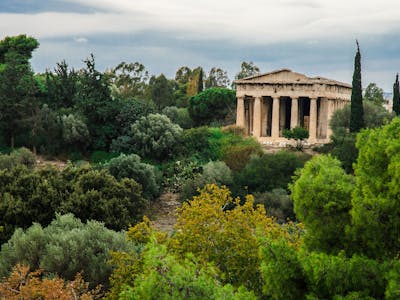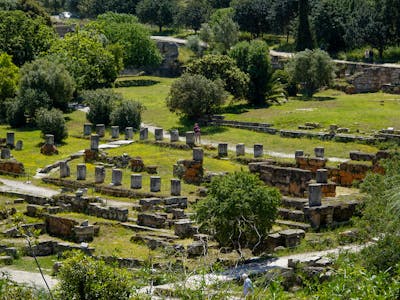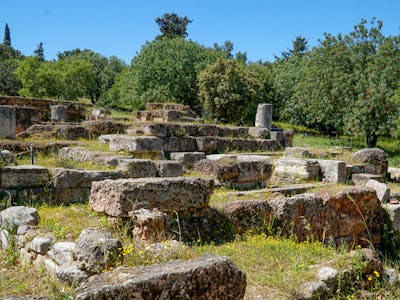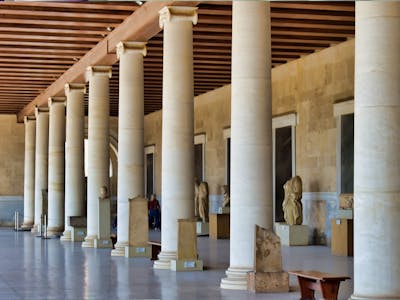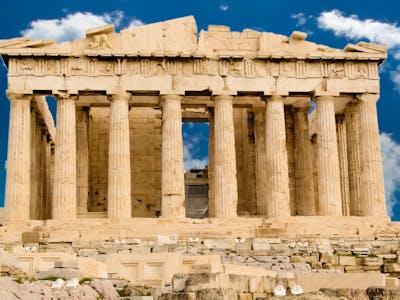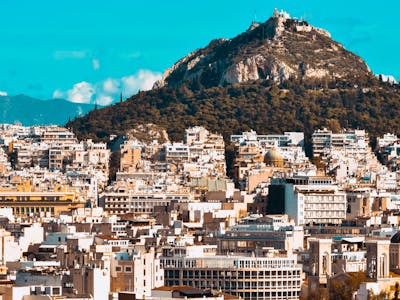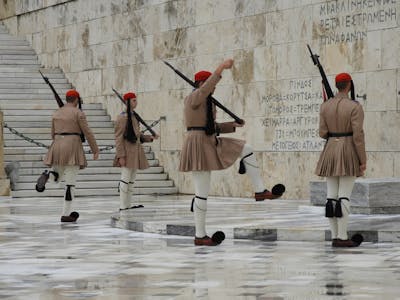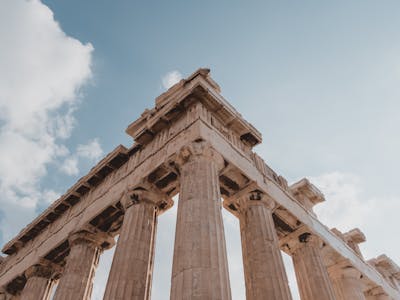Known for being one of the most important sites of the Greek capital, the Ancient Agora was the center of Athens where a lot of political gatherings and juries would assemble to meet, bond, and deliberate on the issues of the day and voice their concerns and look into the courses of action. The archaeological site is situated on the northwest of the Acropolis, right between the two neighborhoods – Thission and Monastiraki.
The dynamic place will provide you with an introduction to the democratic system of ancient Athens and how it came into being. You get to witness the temple of Hephaestus, see the ruined remains of Bouleuterion, and get a great deal of information regarding the Museum of the Agora.
This ancient city with its court of law, temples, ‘stoas’ and so much more has made a significant contribution to mankind, right from curating the ideals of citizenship to developing the foundations of democracy.
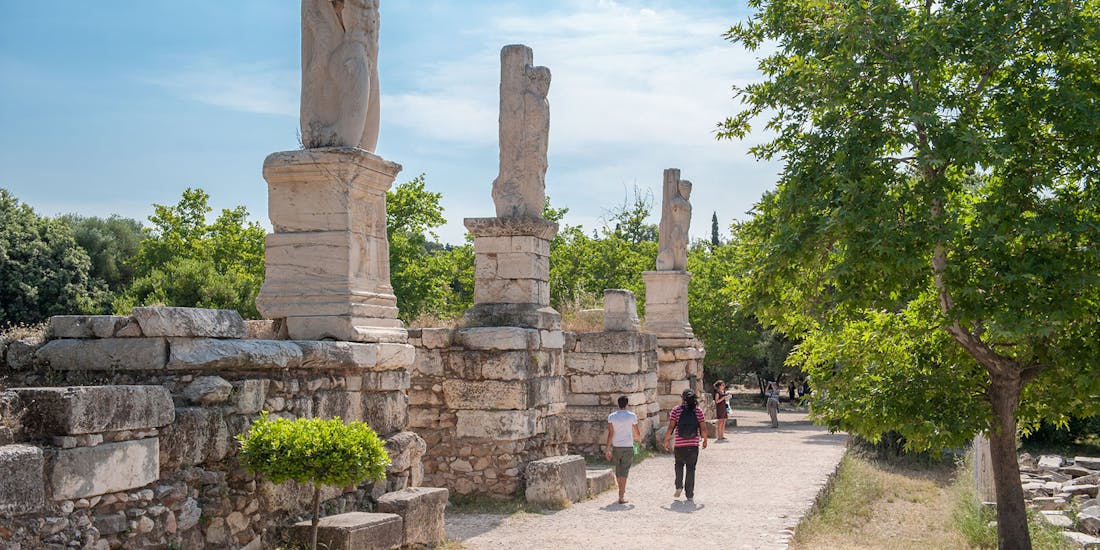
Tickets and Opening Hours
Tickets
- Unified ticket full price: €10
- Unified ticket full price reduced price: €5
- The ticket includes entry to both the museum as well as the the agora itself.
- Visitors under the age of 25 from EU countries have free admission. The free ticket is available at the cash desks with proof of ID
- Children under the age of 5 have free admission as well.
- Free Admission Days: 6 March, 18 April, 18 May, Last weekend of September, 28 October, All Sundays during the period of 1 Nov to 31 Mar.
Opening Hours
The Ancient Agora is open daily.
- During Summers (April 1 – Sept 30): Mon – Sun: 8:00 am to 8:00 pm (Last entry by 7:30 pm)
- During Winters (Oct 1 – Mar 31): 8 am to 5 pm (Last entry by 3:45 pm)
- Closed: 25 and 26 December, 1 January, 25 March, 1 May and Easter Sunday
Best Time to Visit
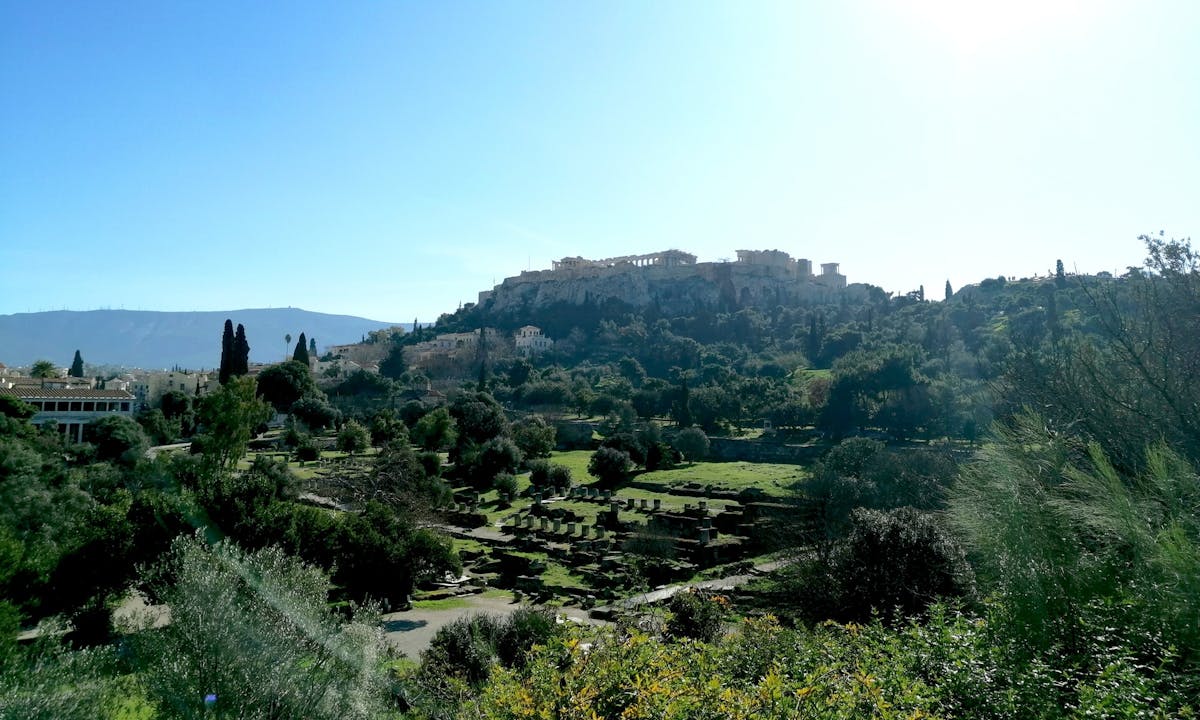
Visiting the ancient agora of Athens is best done early in the morning, before the heat of the day sets in. This is especially true in summertime, when temperatures can be quite hot.
Different times of the year make a visit to the agora ideal for different reasons.
- June - July: The warm weather in Athens makes it perfect to take in sprawling ancient sites like the agora!
- March and November - Less crowds during this time, so you can explore the site at your leisure.
If you want to peruse your decision some more, you can read more about the best time to visit Athens to plan a perfect trip.
Why Visit
The Agora was the heart of Athens and is no doubt, the best-preserved site from ancient Greece that still exists. The space was the centre of Greek life, not only as a marketplace, but an important space that focused on government, religious activities, commercial, as well as served for being the seat of justice.
There is a lot to wander through the shady pathways of Agora. One of the most impressive buildings in Ancient Agora is the Stoa of Attalos, which underwent a revamping in itself and now houses the Agora’s Museum. Another one that you can’t miss is the Temple of Hephaestus. As you stroll through the grounds, you will have a perfect view of the Acropolis, towering right above you. It is quite a site to witness how the ancient Greeks saw this as the home of power, wealth and the gods themselves.
The Agora of Athens - The Premises
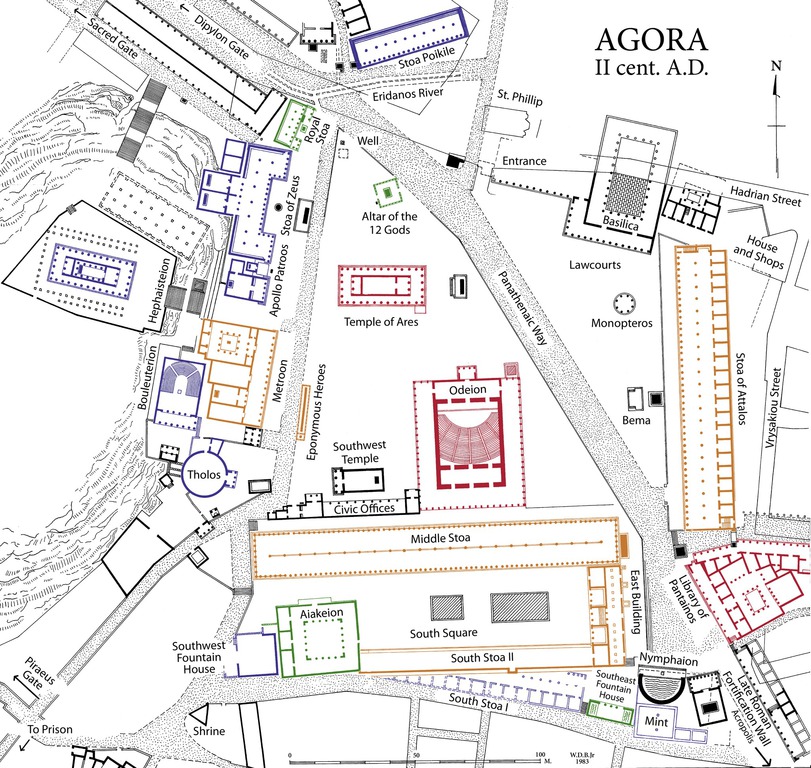
The Agora of Athena is a very influential archaeological site and gives an insight into the life of the Greeks. The term ‘Agora’ means a place of gathering. It was an ultimate marketplace where every citizen would participate in matters of governance, judicial matters, or work together to build an ideal society in the world. Undoubtedly, the Agora of Athens is where democracy came into being.
When you visit the Agora of Athens, there are a lot of prominent sites that are worth witnessing on each side of the archaeological site.
What is an Agora?
In Greek cities, the word Agora was synonymous with open space that is used as a meeting ground for various activities of the citizens. The word connotes an assembly of people as well as the physical setting. In modern Greek terminology, it simply means ‘marketplace’. The term was applied by the classical Greeks of the 5th century BCE, to what they associated as a typical feature of their life – judicial, social, religious, and other activities.
The agora was a space located either near the harbor or right in the middle of the city, surrounded by the public and by temples.
Initially, the evolution of the agora has been seen in the East and, with better results, in Minoan Crete, and in Mycenaean Greece. Two types of agora existed in the 5th and 4th century BCE where one was archaic, whereas the other, was ionic. An example of the archaic type is the agora of Elis, in which colonnades and other buildings were not very much in coordination, and gave out an image of being disordered. The agora of Athens was rebuilt to a similar type of design after the Persian Wars. Whereas, the Ionic type was more symmetrical and organized.
The usage of agora differed with each period. During the classical times, the space was not just used for popular assemblies. In Athens, the assembly was eventually moved to the Pnyx, but the meeting associated with ostracism continued to be organized in the agora, where the main tribunal remained.
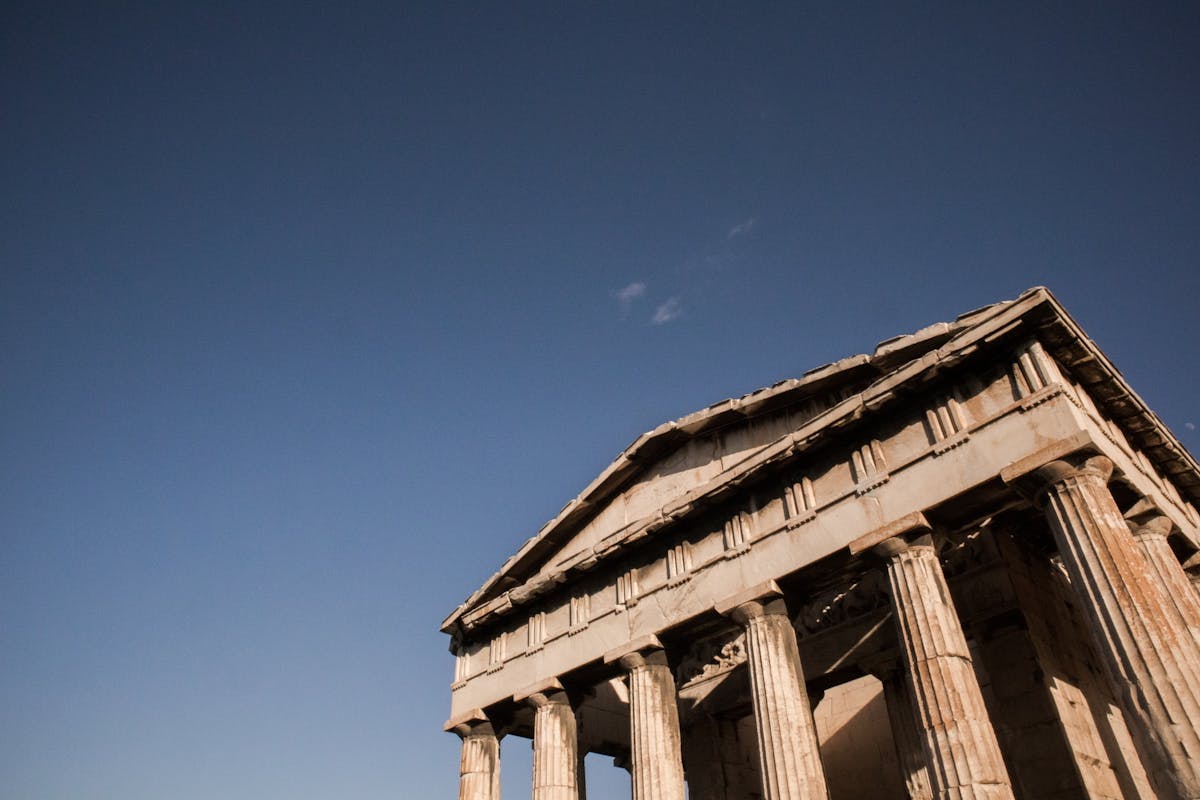
The History
Known for being the heart of ancient Athens, this was a place with a roof under which all political, commercial, social, religious and many other topics were discussed and actioned, during the time. The place was occupied with no interruptions in all periods throughout history. Initially, the agora was used as a residential and burial area which later, in the 6th century, became a public area, in the time of Solon.
The agora has had constant repairs and remodelling done, and it finally attained the rectangular form in the 2nd century B.C. The space was extensively worked on after serious damage was done by the Persians in 480/ 79 B.C, and by the Romans in 89 B.C. The damages by Herulae and Slavic invasion were no less, and the place was gradually abandoned. Eventually, Athens became the capital of Greece and was developed as a residential area.
The first excavation was carried out by the Greek Archaeological Society in 1859-1912, by the German Archaeological Institute in 1896-97. The Athens-Piraeus Railway brought to light the remains of an ancient building, in 1890-91. Further in 1931, the American School of Classical studies began to excavate and this continued until 1941. With the aim to unwrap the whole of the Agora, around 400 modern buildings with an area of ca. 12 hectares had to be demolished.
Eventually in the 19th century, the four colossal figures of Giants and facades of the Gymnasium were restored by the Greek Archaeological Society. The Stoa of Attalos was reconstructed to a museum, the Byzantine church was made to an American school and the Hephaisteion was restored.
9 Sites to Visit at the Agora of Athens
1Temple of Hephaestus
The temple of Hephaestus is one of the best preserved of its type in Greece. The temple was built to honour Hephaistos, the patron of metal works, potters and crafts in general. During the 7th century, the space was converted into a church of St. George and later in the 19th century, was used as a burial spot for protestants and those who died during the Greek War of Independence. In 1834, it was used to welcome the first king of the modern Greek state, King Otto. Ever since then the building, till the 1930s, was used as a museum.
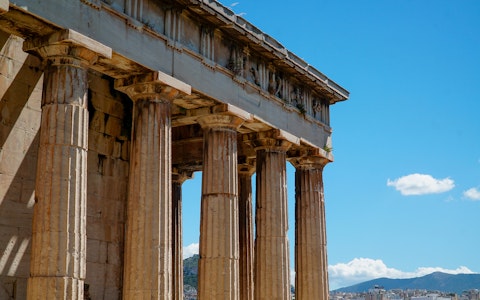
2Stoa of Attalos
The temple of Hephaestus is one of the best preserved of its type in Greece. The temple was built to honour Hephaistos, the patron of metal works, potters and crafts in general. During the 7th century, the space was converted into a church of St. George and later in the 19th century, was used as a burial spot for protestants and those who died during the Greek War of Independence. In 1834, it was used to welcome the first king of the modern Greek state, King Otto. Ever since then the building, till the 1930s, was used as a museum.
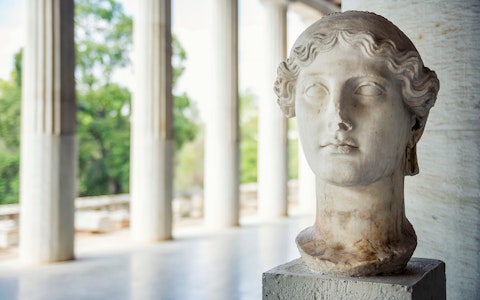
3Byzantine Church of Holy Apostles
The Church of Holy Apostles was built in the 11th century but was altered throughout the course of time and was restored to its actual form from 1954-1956. The church is the only structure in the Ancient Agora, excluding the Temple of Hephaestus, that has been surviving intact ever since its foundation. This Structures comprises a signature eight-side dome along with a floor plan which was in the shape of a cross, with apses on either of the four sides and a narthex on the west. This marked the beginning of an Athenian style church from the Byzantine period.
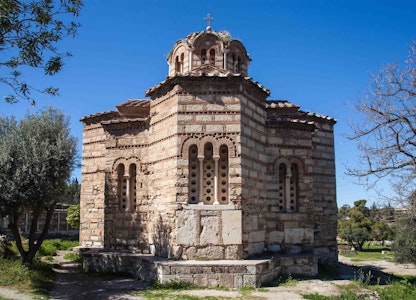
4Temple of Aphrodite Urania
The Temple of Aphrodite Urania was built around the early 5th century BC. Standing north-west to the Ancient Agora of Athens, the temple was completely devoted to the Greek goddess, Aphrodite. Urania was a sobriquet for Aphrodite, signifying her to be spiritual and heavenly. It is said that the sanctuary has a marble statue of the deity which was sculpted by the Greek sculptor Phidias. There are quite a few ancient stones that lie on the hill by the train track and close to the Hephaestus temple, where the ingenious craftsmanship of the ancient Greeks is admired.
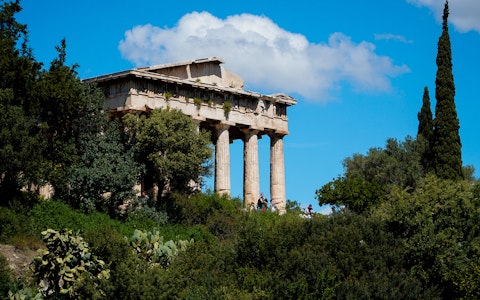
5Odeon of Agrippa
The Odeon was a Roman addition to the old Greek Agora in Athens. Known to be as Agrippine, this was named after their son-in-law and general of Augustus, Marcus Vipsianus Agrippa. The space could accommodate around 1000 visitors at a time, who would be seated across 19 rows of benches around a marble-paved orchestra. Consisting of two entrances, one was used for the notables and performers, while the other one was for the visitors. In 150 AD, the Odeon collapsed but was further rebuilt to a spacing that allowed only 500 visitors unlike the previous set up. It was not until the 5th century AD, that a large complex was built over the former Odeon called ‘gymnasium’.
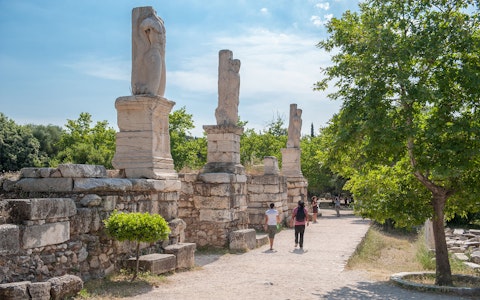
6Ruins of the Bouleuterion
Shaped like an early Greek Temple, the Bouleuterion is a simple structure situated at the west side of the Athenian Agora, and dates from the end of the 6th century BC. The space was used to seat the members of the Boule council with advisory, legislative and administrative responsibilities of Athenian Democracy.
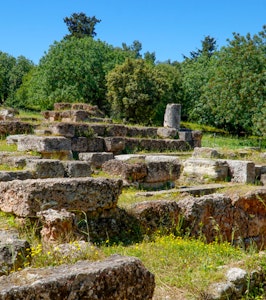
7 Theatre of Dionysus
The Theatre of Dionysus was the first and one of the largest theatres that was ever built in Athens with a seating capacity of 17,000 people. The place is located on the south of the Acropolis and was dedicated to the Greek god of drama – Dionysus. While it was first built, the theatre had just wooden seating which further went to be replaced by stone. The first row was occupied by the most important citizens of Athens. Very important Greek plays of the time were performed in the theatre. Despite all these years, the Theatre of Dionysus still maintains its essence.
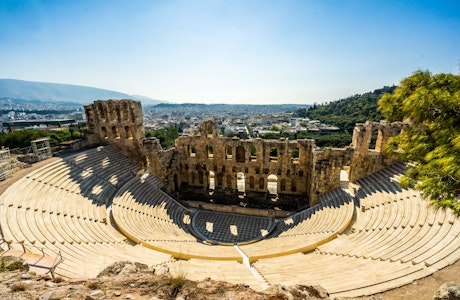
8 Prison of Socrates
Located at Filopappou Hill in Athens, the Socrates Prison is an ancient building which got its name due to the widespread belief that the ancient philosopher was once imprisoned at this location. Although it has been disputed by many, few believe that this was the real prison where Socrates was found. It is seen that the prison was built in the middle of the 5th century and its location was apparently on the main road. Also, there is significant proof that gave account about a ground put and facilities for baths. You can also witness the further details of imprisonment, the place it occurred, and the execution of Socrates contained in the dialogs of Faedon and Criton.
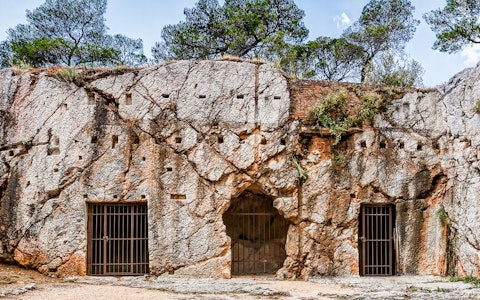
9 Monument of the Eponymous Heroes
The Monument of the Eponymous Heroes was a marble podium that bore the statues of ten heroes that belonged to the tribes of Athens. This work was an important information centre that celebrated the origins of the city and displayed important communications that were addressed to its citizens. This was a monument where proposed legislation and announcements were put up. At the foot of the statues, wooden tables were kept portraying new laws, accusations, and everything with reference to public life. Presently, only the base and the fence are visible, with a row of rectangular pillars perforated on either side.
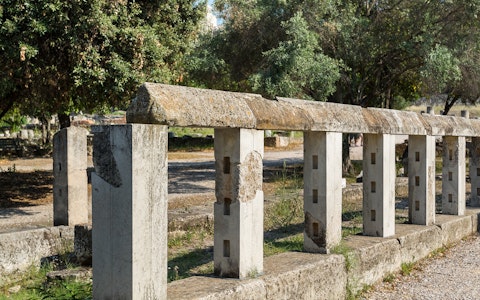
Where To Buy the Ancient Agora Tickets?
On-site
Every year around 3 million visitors step into the sacred ruins of Athens. This makes it hard to get tickets at the counter. However, if you want to try your luck, you can head to the ticket office and purchase the tickets. Europeans and children under the age of five will be handed free passes with the proof of ID.
Buy Them Online
If you're visiting on a specially crowded by chance, there is not other sure-fire way than the Ancient Agora Skip the Line tickets, which can be purchased online.Booking them online also gives you the perks of discounts and cashback, saving you time & money.
Getting There
- The closest metro stations are Thiseio (Line 1) and Monastiraki.
- Closest Train station is Thiseio.
Restaurants Near the Agora Of Athens

A Greek restaurant that serves up Greek cuisine with a contemporary twist, Kuzina is an excellent spot for meals. Located right under the Acropolis, the restaurant building also has an art gallery on the second floor.

Famous for it's large portions and breakfast foods, Athinaion Politeia is located in the heart of Athens, at a walkable distance from the ruins. The café's outdoor dining serves up gorgeous views of the Acropolis!

Not your typical restaurant, Syntrimmi is a hidden gem with a quaint atmosphere, perfect place for small plated meals or a light supper. It has a great variety of delicious vegetarian and vegan options as well!

The infamous American foodchain has set up shop quite close to the Agora! Serving up burgers, beers and fries the American way, the Hard Rock Cafe is but a stone's throw away from the ruins.

Try the traditional raki and Cretan meals at Cafe Avissinia! With a view of the Acropolis, the cafe has outdoor terrace seating as well, and is known for it's home-style meals!
Insider Tips for your Visit
- We recommend visitors to the Ancient Agora to wear comfortable footwear as there are steps to climb.
- The best time to visit the Agora is as early as possible. It is suggested to get there at least half an hour before the opening time.
- There are multiple stops in and around Athens. The Line1 functions between Pirarus and the northern suburb of Kifisia, offering the closest stop to Ancient Agora. This makes a great deal for sightseers and cruise ship passengers.
- Free admission days are 6 March, 18 April, 18 May, Last weekend of September, 28 October, All Sundays during the period of 1 Nov to 31 Mar.
Things to do Nearby
If you want to cover all the major attractions nearby, the Ancient Athens Pass is highly recommended. It allows you to skip the lines at the Acropolis, the Temple of Zeus, as well as the Agora of Athens.
FAQs
Is the Agora of Athens worth visiting?
How much does it cost to visit the Athens Agora?
How long does it take to see the Agora?
What was the agora in Athens used for?
Who taught at the agora in Athens?
Why was the agora so important in ancient Greece?
Why is the agora historically significant?
Ready to explore Athens?
Check out the top things to do in Athens and plan your vacation like a pro!


